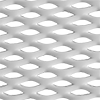Filter by
Thickness
Color
Performance
For Use With
Flexibility
Clarity
Comparable To
Wall Thickness
Maximum Temperature
Relative Friction Rating
DFARS Specialty Metals
Raw Materials
Measuring and Inspecting
Fluid Handling
Fabricating and Machining
Fastening and Joining






































